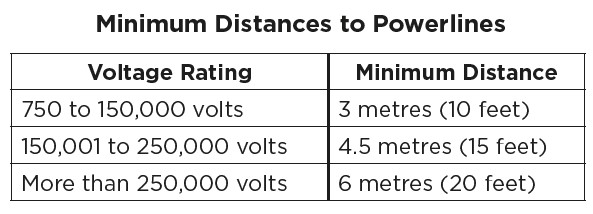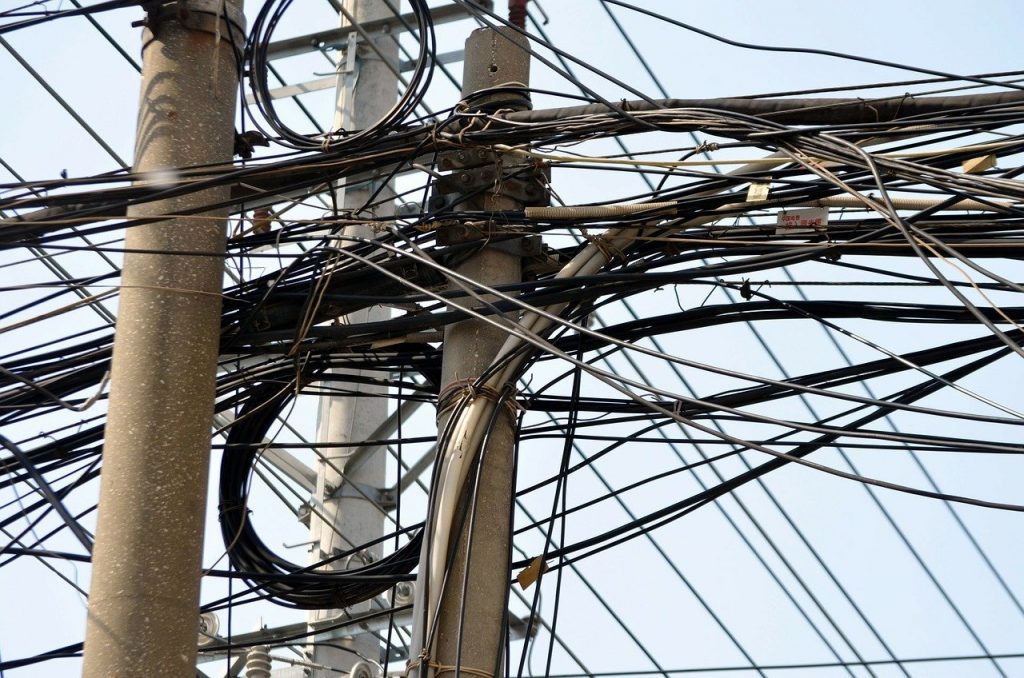Powerline Contact
Powerline contact
Explain dangers
Powerline contact is a major cause of fatal accidents and critical injuries.
These types of incidents usually involve heavy equipment such as backhoes, dump trucks, boom trucks, cranes, and excavators.
Beware of contact when moving extension ladders, rolling scaffolds, long lengths of pipe, and siding. Also, beware of the powerline moving (i.e., blowing in the wind).
Identify controls
The constructor must develop written procedures ahead of time if the equipment or its load could encroach on the the minimum permitted distance to an overhead powerline.
These procedures must be communicated to every employer and worker on the project. They should include the use of warning devices and
signs.
Follow these safe practices when working around around powerlines:
• Don’t store material and equipment below overhead powerlines.
• Obey all warning devices or signs.
• Use a signaller to direct equipment operators and truck drivers The signaller must be in full view of the operator and have a clear view of the powerline.
The signaller must warn drivers and operators when any part of their equipment or load approaches the minimum distances set by law.
• When erecting or moving a ladder or scaffold, don’t let it lean or drift toward overhead powerlines. Always maintain minimum allowable clearances.
• To determine powerline voltage, check markings on the pole or call the utility.
In case of accidental contact with a powerline, follow these procedures:
• Never touch equipment and the ground at the same time.
• Get someone to call the local utility to shut off power.
• If possible, break contact by driving the equipment clear of the powerline. Otherwise do not leave the equipment until the utility shuts down the power or fire forces you to jump clear.
• Keep everyone away from any equipment in contact with a powerline.
• Beware of time relays. Even after breakers are tripped by line damage, relays may be triggered to restore power.
Demonstrate
Review the company’s written procedures with your crew and point out any warning devices and signs on the site.
Review the minimum permitted distances, which are listed in the Construction Projects regulation and in the table below.

For more information, visit the IHSA website.

